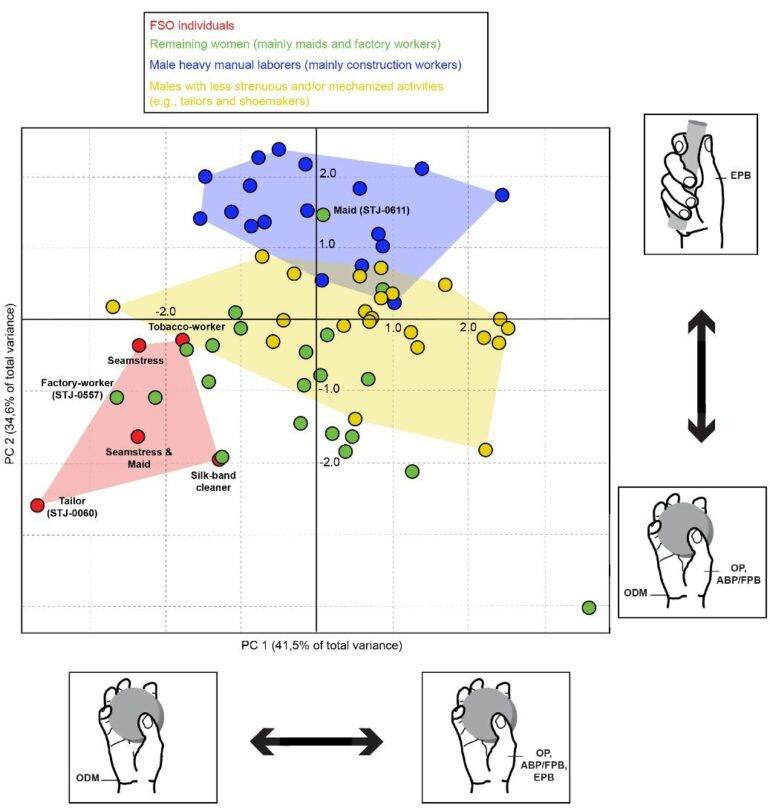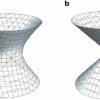The hand skeletons of women workers from the early days of industrialization reflect the diverse and unstable manual activities of their everyday lives.
New research led by Dr. Alexandros Karakostis from the Institute for Archaeological Sciences at the University of Tübingen and Dr. Gerhard Hotz, Curator of Anthropology at the Natural History Museum of Basel, demonstrated for the first time that hand bones preserve extensive information on the daily lives and activities of past women and men. The results have been published in the American Journal of Biological Anthropology.
The researchers have applied an innovative methodology called VERA on the 19th century hand skeletons of workers from St. Johann Hospital Cemetery in Basel, Switzerland: They examined them with a virtual 3D analysis, reconstructed their daily manual activities and compared those with documented life histories. “This validated approach relies on the 3D analysis of the bones, focusing on the areas where the muscles attached during life,” says Dr. Alexandros Karakostis, lead author of the study and creator of this novel approach.
Changing jobs
The hand bones studied clearly showed the sex-specific division of labor during industrialization, one of the most formative periods of modern societies. The researchers found an impressive morphological variability in women who had worked as maids or in factories: this corresponded to their diverse activities and changing jobs, a common phenomenon at the time. Women workers with more specific occupations, like seamstresses and tailors, showed distinct characteristics in their hand bones.
It was similar for men who had “gender-typical” occupations. For example, construction workers showed skeletal markings reflecting heavy manual labor and powerful grasping. Men who performed more fine-motor activities, on the other hand, showed bone characteristics indicating frequent precision grasping using the thumb and the index finger.
Reconstructing the history of the division of labor by biological sex is a necessary step for understanding how our society evolved. However, anthropologists were not able to test if the methods they use to investigate the division of labor are reliable due to the absence of female skeletal samples with known lifetime activities. In fact, the occupation of women in previous centuries was poorly archived, often due to the way in which societies in the past perceived women’s labor.
Unique documentation
Karakostis and Hotz addressed this crucial gap by performing the first anthropological research that focuses on the hand bones of historic low-status women workers from early industrial Basel. For their study, Karakostis and Hotz used finds and data from the Basel Spitalfriedhof project, which provides insights into the living conditions of Basel’s lower class in the 19th century through identified skeletons, associated medical records, and documented life stories.
“The daily lives of these women laborers are documented in a level of detail that is universally unique,” says Alexandros Karakostis. The large archives associated with each of these skeletons have been carefully studied for over 15 years by a large number of volunteers of the Citizen Science Basel project, under the direction of Gerhard Hotz.
“The findings provided revealing insights into the daily lives of working-class women and men from early industrial Basel, attesting to the promise of our methods and documented samples for exploring the lives of other humans that lived in the past,” says Karakostis.
More information:
Fotios Alexandros Karakostis et al, Reflections of manual labor in the hand entheses of early industrial women workers with extensively documented life histories, American Journal of Biological Anthropology (2022). DOI: 10.1002/ajpa.24636
Provided by
Universitaet Tübingen
Citation:
19th century hand bones provide novel insights into the daily lives of early industrial women workers (2022, November 2)



